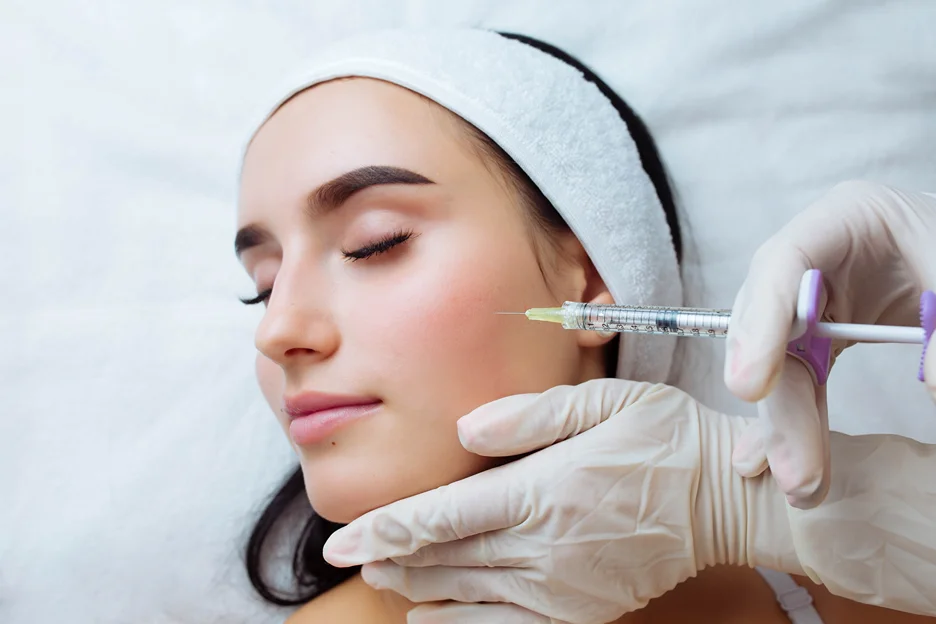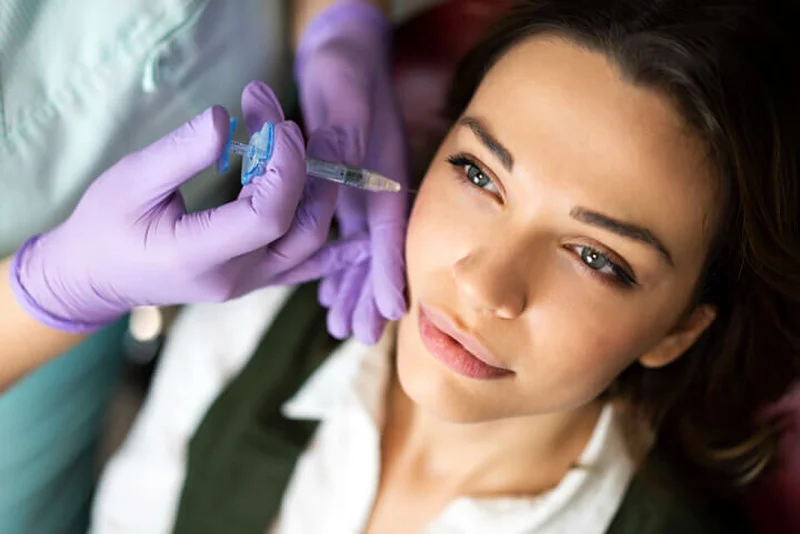
Filler injection | uses and types
Filler injections are a cosmetic treatment used to smooth wrinkles or pitted scars in the skin, usually on the face. They are also used to make the lips fuller. When injected under the skin, a filler raises or puffs up that area. This usually goes away over time.
What are fillers?
Fillers are gel-like substances that are injected beneath the skin to add fullness and reduce the signs of aging. This is a minimally invasive technique that can enhance a youthful appearance without the need for surgery and its associated downtime. However, their results are generally more subtle and less dramatic than those achievable through surgical procedures, such as facelift surgery.
Uses of fillers injection
Filler injections can achieve the following:
- Reduce fine lines or wrinkles around the nose and the mouth.
- Enhance & restore volume to sunken cheeks and temples.
- Plump and improve the lips.
- Fill in or soften recessed scars e.g. acne scars.
- Smooth outlines around the nose and mouth (a.k.a. marionette lines, smile lines, and parentheses)
- Enhance & restore volume to sunken cheeks or temples.
- Diminish vertical lip lines
- Plump & enhance the lips.
- Smooth out a chin crease.
Types of injectable filler
There are many kinds of injectable fillers, including:
- Hyaluronic acid
It gives your skin volume, keeps it hydrated, and can be used to improve the skin’s contour and reduce depressions in the skin due to scars, injuries, or lines.
- Calcium hydroxylapatite (Radiesse)
It is found naturally in human bones and is a mineral-like compound, It’s often used to Moderate-to-severe wrinkles such as nasolabial folds, marionette lines, and frown lines.
- Polylactic acid
It is an artificial dermal filler that is injected into your face, causing your body’s production of collagen, called a stimulator.
It works particularly well in the lower half of your face and is used to Fill the lines induced by laughing and Treat serious nasolabial folds
- Polymethyl-methacrylate microspheres (PMMA)
PMMA is considered a semi-permanent filler and is most often used to treat medium-to-deep wrinkles, particularly nasolabial folds. It can also be used to fill out pitted scars and to expand thin lips.
- Polyalkylimide
It is a semi-permanent dermal filler and is usually used by plastic surgeons to Treat deeper wrinkles such as nasolabial folds or depressed scars.
Filler injection procedure
After consultation and examination, your surgeon will determine with you the type of filler that will best suit your needs. This will depend on what problems you want to correct and the quality of your skin.
A topical anesthetic cream may be applied first to minimize the pain during the procedure. Multiple injections are usually required, but these are generally well-tolerated. If the procedure goes smoothly, you can go home soon afterward. There is minimal downtime, and you can usually resume your regular activities within the next few days.
After the Procedure
You should be able to notice the results instantly after receiving the injections. Redness, swelling, pain, and bruising are relatively common side effects afterward. These usually resolve within 7 to 14 days.
Depending on the kind of filler injected, your results may last from several months to a couple of years. Your surgeon will advise you when you need to repeat the treatment to maintain your results.
What are the complications of dermal fillers?
Serious complications are rare, and some of these side effects are only temporary. But as with any cosmetic procedure, there are some risks, such as:
- Asymmetrical appearance.
- Bleeding, redness, and swelling.
- Damage to your skin (scar).
- Infection can lead to necrosis in severe cases.
- Lumps under your skin.
- Rash and itching.
- Numbness
In conclusion, filler injections have become a popular non-surgical option for enhancing facial features and restoring youthful appearance. These minimally invasive procedures offer natural-looking results with minimal downtime. If you’re considering the procedure, it’s important to consult with a qualified professional like Dr. Fuad Hashem Head section of plastic surgery. With his expertise and personalized approach, you can trust him to deliver safe and effective results that meet your aesthetic goals.
Therefore, if you intend to perform this procedure, we recommend that you book an appointment with Professor Dr. Fuad Hashem, Plastic Surgery Consultant at King Faisal Specialist Hospital and Research Center, who has great skill and extensive experience in this field.
To book an appointment with Dr. Fuad Hashem, you can call the following numbers:
Mobile: 0500107222
Phone: 920010029







